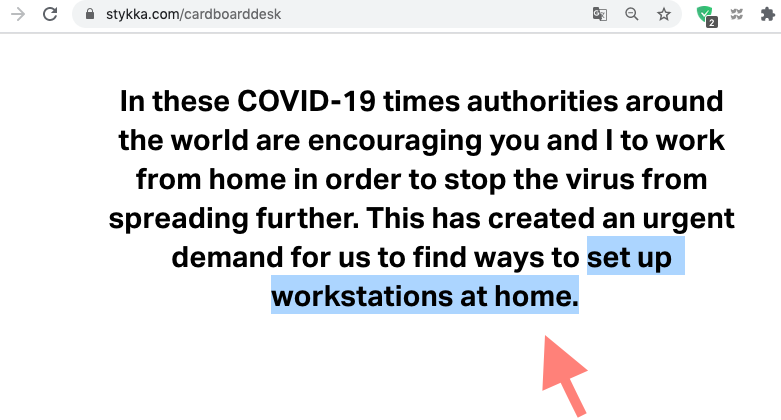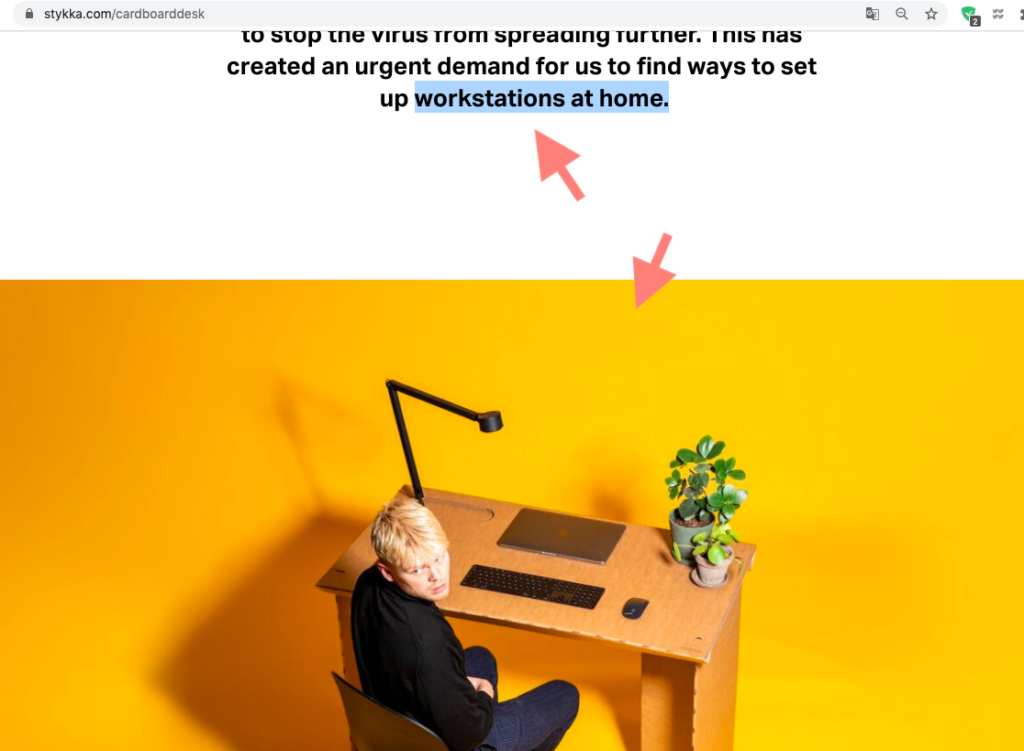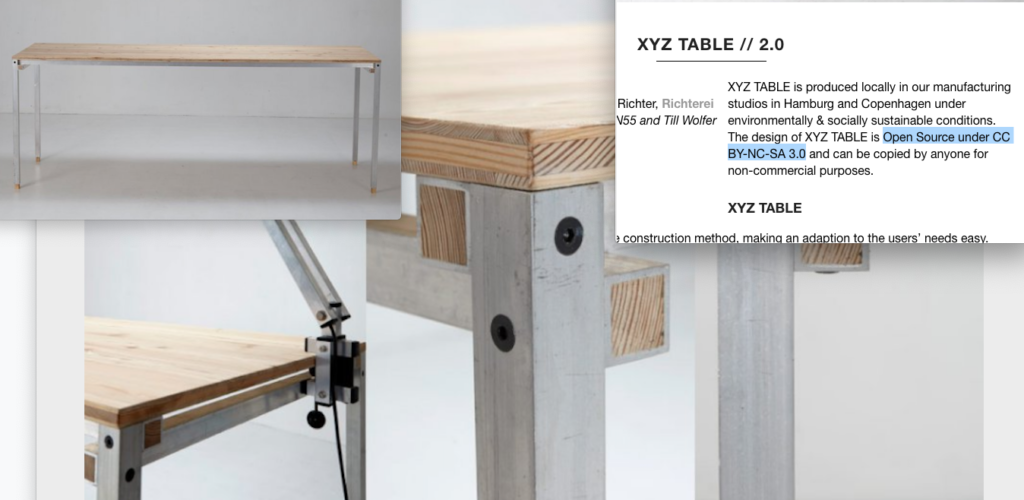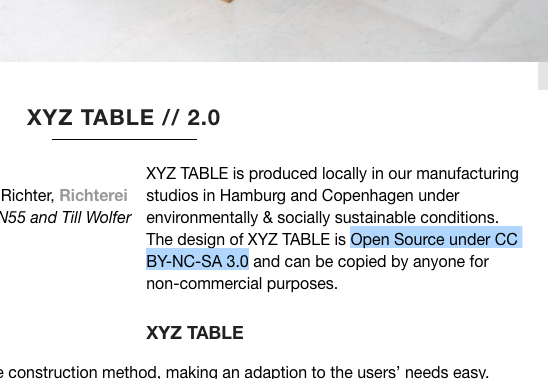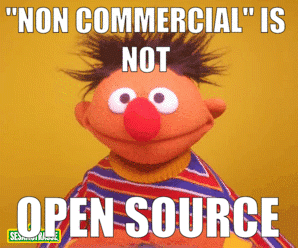
›
Occasionally you’ll see on the web hardware projects that use a Creative Commons “Non Commercial” license like CC-BY-NC or CC-BY-NC-SA and advertise themselves as being “Open Source”. This is false and sadly even rude as it causes a lot of problems and harms other people’s work. Usually this is not intended by the people causing this harm. So time to learn about it.
–
Non Commercial ≠ Open Source
Look at the Open Source definition itself and also related definitions like the Open definition, the Open Hardware definition, the Free Culture definition or the Free Software definition. They all strictly and explicitly include the allowance of commercial use. All licenses approved by the Open Source Initiative allow commercial use. The CC-BY-NC or CC-BY-NC-SA are not on the list, because they aim to retain a commercial monopoly and are therefore not ‘open source’.
It is reasonable to argue that the allowance of commercial use is the main reason for the enormous success of the open source software movement and the immeasurable amount of good it has brought to the world.
Using a Non Commercial license in combination with the term “Open Source” is like saying “I cook vegan food using only pork”. This causes problems. For example it spreads miseducation and fosters misconceptions about the field. People will gain a false understanding of what Open Source actually is, how it enables collaboration and achieves positive impact. They will try to reproduce the positive impact connected to the Open Source brand using means that actually undermine it. This weakens the field and its potential to do good for all of us.
And you can also just call it rude. Because when you leverage the term “Open Source” to advertise your work you borrow credibility and deserved kudos from people who have in fact open sourced their work. But you do not just that – you even sabotage what they have built at the same time. This isn’t nice.
Also it is worth to mention: The Open Source Initiative is an NGO and owns the trademark “Open Source”. It allows others to use the trademark as long as they use an open source compatible license for their work. It is thinkable that you risk to be sued for trademark infringement when you use “open source” and have the wrong license next to it.
So please stop using Creative Commons “Non Commercial” licenses for your hardware in combination with the trademark or expression “Open Source”. Change the license to an open source one (like CC-BY) or stop advertising your work as being “Open Source”.
Using a Creative Commons “Non Commercial” license for a hardware project and calling it “Open Source” is not just false advertising. It is also nonsense from a legal point of view. And because of that it creates even more problems some of them surprisingly bizarre and harmful. Most people won’t be aware of them so we laid them out in an FAQ below.
–
FAQ
Why Creative Commons “Non Commercial” Licenses do harm to hardware
0
Yes. Sure
➔ “Non Commercial” licenses are not Open Source. They don’t meet the requirements of the official and binding Open Source Definition which explicitly includes commercial use.
➔ Creative Commons licenses are based in copyright law and are therefore not fit to govern hardware which is subject of patent law. Applying them to hardware is a misuse that neither the Creative Commons organisation nor our law supports.
➔ The misuse of a Creative Commons license for hardware allows you to “steal” from the commons – to take something that belongs to everyone and make it exclusively yours – by threatening others with vague legal and undeserved social consequences. You pretend to own something you don’t own and build on other people believing you.
➔ “Non Commercial” is a vague term. Everything can be constructed as a commercial use in court. Therefore the license poses a vague legal threat to everyone and every use case. The only exception are large companies with professional lawyers who know that the CC-license won’t hold up in court and won’t be stopped by them.
➔ If you think a commercial monopoly is your only way to make a living – no problem. Do your thing. But don’t use/violate the registered “Open Source” trademark to advertise our work then. But maybe you take some time and find out how you can run a business and design a product without a commercial monopoly – as many Open Source Businesses show you.
➔ “Non Commercial” licenses aim to block others from engaging in professional activities with a design. But in a sustainable global economy professionals everywhere need to do all kinds of things with a design – repair it, reuse it, refurbish it, recycle it and so on. “Non Commercial” licenses block sustainable development and the development of cultural answers to climate change, resource exhaustion and biodiversity collapse. The motivation to exclude others from commercial use is questionable, regardless if the legal means chosen support this or not.
➔ Do things the right way! Use a proper Open Source license such as the CC-BY or CC-BY-SA or drop your claim to be “Open Source” from your communication. Do some homework how you as a hardware designer can address IP questions properly in order to support real Openness and sustainable development.
Thank you!
1
Well, we are not alone with this. Here is a brief list of articles and sources from important and influential actors in the field of Openness and Open Source that lay out the same problem:
- Freedom defined – available in other languages as well Deutsch, Español, Français, Hrvatski, Nederlands, Português
- Sam Muirhead @OSCEdays
- Debian FAQ
- Open Source Initiative
- The Open Source Hardware Association
You can also simply just revisit the first section of the post and click on some of the open definitions mentioned there.
“Look at the Open Source definition and also related definitions like the Open Definition, the Open Hardware Definition, the Free Culture Definition or the Free Software definition.”
The practice of “Non Commercial” = “Open Source” emerged in the field of making and “Open Design” which is under the radar of the Open Source Software movement. So no one really cares to clean it out. Some successful hardware projects used the combination of a Creative Commons “Non Commercial” license and the term “Open Source”. You might have seen one of them and gained your false idea from that. It is time to clean up.
2
Yes, you do. But so does every patent – in a way. To file a patent you have to publicly share how something is made. But any patent is better for the commons than a Creative Commons “Non Commercial” license for hardware. A patent provides a pretty narrow scope of protection and it only lasts for 25 years or less.
But the Creative Commons license is based in copyright law. And copyright law allows a much broader scope of protection and lasts much longer – up to 75 years. So sharing hardware design files under a Creative Commons “Non Commercial” license and giving people the impression that this license actually protects the hardware itself (which it doesn’t) takes potentially much more away from the commons than any patent could ever do.
So it is better not to share your design files at all then. Because your publication does not add something to the commons or the freedom of others, it takes something away! Your act of sharing is not an act of providing – it is an attempt to take something from others.
To understand this better pls. also have a look into the other questions.
3
There have always been discussions inside of Creative Commons. Many argued that “Non Commercial” licenses don’t make sense for a project that had the word “commons” in his name and that they will do more harm than good. But in the end the people who argued that the NC-licenses will work as a “gateway” to get creators start flirting with the commons got their way and these licenses were created and are still supported.
And for the works these licenses are made for – for copyrighted work like text, images, code and music – these licenses are indeed not that big of a problem. The problem starts (and quickly explodes) where people falsely use these licenses to say something about their hardware, where they pretend it is possible to use a copyright based license to protect something that does not fall under copyright law.
4
Sadly in some sense “Non Commercial” licenses are indeed the “end of the world”.
It might seem a bit off-topic but we are actually invested in Openness because we are interested in sustainable change. “Non Commercial” licenses slow down sustainable change.
Sustainability is about fighting the garbage bin. Instead of throwing things out quickly sustainable design enables different actions and activities such as repair, reuse, refurbish and recycle. Sustainable design is about enabling others to do all kinds of productive things with a design. The main goal of “non commercial” licenses is to stop others from doing anything with a design – other than consuming it.
Repair, reuse, refurbish and recycle are activities that need to be carried out by professionals in the majority of cases. We need professional businesses to do the reprocessing. “Non commercial” licenses make this harder and maybe even impossible. So “Non Commercial” licenses aim to block sustainable (re)processing of goods.
Obviously this is a very general statement. It does not apply to all products. But if you look at it twice or even three times you’ll find much more examples where this is really the case as you first would have thought.
Repair, reuse, refurbish and recycle are actions that help us against climate change, resource depletion and biodiversity collapse. “Non commercial” licenses disable the process of reinventing our culture to make it sustainable.
If you care for sustainable design you have to care for whole system design. Designing with a Non Commercial license is probably bad system design.
–
More on this: What is Open Source Circular Economy?
5
It might be understandable that you are ok with normal people using your design for free but not some strange large company. But a Creative Commons “Non Commercial” license is no means to achieve this. It will have the exact opposite effect.
The key problem is that it is not clear what “Non Commercial” means – it is really vague. Let’s say you made a nice table and you share the design files for ‘normal’ people to use. But you don’t want a big multinational corporation producing 1000s of your tables and selling them without giving you a share.
Let’s break this down and highlight where the problems are.
If I as a normal person make your desk for my home kitchen it is not commercial use, right? But what happens if I invite my colleagues, boss or other business partners over to my house? Does this already count as a commercial use? And what happens when a pandemic hits the world and suddenly my home becomes my office and I sit on your desk all day doing my work, earning my income? Is it still “non commercial” use then? Some lawyer in some court with some arguments and could convince some judge that it is indeed now a commercial use.
Everything is always with one foot in the commercial area. There is no way I make a hardware project shared under a Creative Commons “Non Commercial” license and don’t risk to violate the license and being sued for that.
The company Stykka shared design files for their cardboard “StayTheF***Home” desk as “’Open Source’ under a Creative Commons ‘Non Commercial’ license” suggesting that people use it for home office. Is it just a mistake? Or a trap? Who can know for sure? Are you willing to take the risk? Maybe Stykka is nice now, but what happens when the economy changes or the CEO?
Stykka Screenshots, August 2020
→ Website, Mirror.pdf August 2020
–
And now about the ‘big multinational company’:
First of all if they really want to make use of your design ideas it usually is pretty cheap for them to have a designer developing something similar but different enough to hold up in court. And if you are still willing to sue them it is an everyday exercise for them to crush you in court with a longer financial breath and highly motivated lawyers whose 9-till-5-job it is to deal with this and who know that your Creative Commons license does not protect your hardware anyway.
So your “non commercial” license will never harm or stop a big multinational but everyone else – including private people, teachers, students and for example that small carpentry in Togo who could develop a working business and create a flourishing community in their village and a nice decentralized collaboration with you by using your design and building upon it. They don’t have any legal expertise nor interest to spend time and money on lawyers.
So your “Non Commercial” license achieves the opposite of what you probably thought it would achieve.
6
Understanding this is key to understanding the magnitude of the problem that emerges from Creative Commons “Non Commercial” licenses in hardware. We’ll make a super quick dive into the legal basics:
I. L A W S
There are different laws for different kinds of intellectual property. There is:
Copyright – it protects “works of art” so things like images, text, music and also code. If you create something that falls under copyright you receive the protection the commercial monopoly on it automatically and for free the moment you create the work. The protection lasts in many countries for 70+ years.
Patents – protect technical inventions or functionalities. They need to be new! You can’t patent something that is out there for decades like standard nails for example. Filing a patent comes with some costs. The protection the commercial monopoly is granted for a maximum of 25 years.
Copyright ≠ Patents!
There is a fundamental difference between copyright and patents. You can’t protect the same thing with both laws. An Example: A book about a time machine is protected by copyright. The time machine described in the book is not. Only the words that describe the mechanism fall under the copyright law, the described mechanism itself does not. Everyone can build it and sell it. To stop the physical production of the time machine you would have to patent it or actively claim design rights.
Design Rights: In some jurisdictions you have special laws to protect design objects – aesthetic aspects or aspects of functionalities. Design rights are closer to patents than to copyright law. Your design needs to be new. And filing design rights costs money. The protection can only last for 25 years or less.
So much for the laws.
II. L I C E N S E S
Licenses tap into these existing laws. They make statements about the property rights you received through the laws.
The important thing is: The Creative Commons licenses are based in copyright law. They govern works of art – music, text, code, pictures. You can use them to govern your works of art but not to govern your functional inventions and design objects. They can’t say anything about that.
An example: The Lego brick could not be protected with copyright or trademark law because its unique form and aesthetics resulted from the technical functionality of its interlocking mechanism and was therefore a subject of patent law. Once the patent was gone the Lego brick was free.
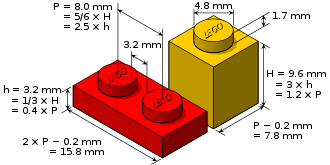
III. G R E Y A R E A S
The problem is that there are grey areas.
If you are an artist – a sculptor – all your work is protected by copyright law including 3-dimensional objects. Since everything can be art today this means in certain cases even functionalities might be protected by copyright law to some extend. If you can convince the judge that you are an artist protecting artwork the creative commons license actually could hold up in court also for functionalities. Maybe. Probably not. But maybe. You can’t know in advance. It depends on how the trial goes.
(More about the difference between the laws and how licenses tap into them and the unclosable gap between copyright and patent law you can find on external pages → here & also in german → here.)
7
Although the Creative Commons licenses are based in copyright law and therefore can’t govern anything about hardware (which is subject to patent law or design rights) they still provide some weird forms of protection when they are misused to make illegitimate claims about hardware.
To understand this you need to understand 2 short things:
.
I. Legal uncertainty & risk
The law is no binary system. There are always 2 sides to a story. “Murder is murder.” Right? Well, what about murder under stress, drug influence, mental illness or as self-defence? Situations can be seen and interpreted differently. And the same is true for written laws. And this why judges make decisions and not computers – after getting a full picture of a situation in a trial. Judges must explain their decisions using existing laws. And part of this is to decide which law applies when in what way.
So this means in a weird situation with the wrong judge and the wrong lawyer a case can be constructed where the copyright based creative commons license is suddenly fit to make claims about 3-dimensional objects and functionalities. It is extremely unlikely though but not impossible. There is always a bit of uncertainty and with this a minimal legal risk to lose in court.
This legal uncertainty or legal risk is some form of protection as not everyone is looking forward to spending time with lawsuits. Smart, nice and good people avoid battles that burn their energy.
Above I told you that the Lego brick could not be protected by copyright or trademark law because the court ruled that its unique form resulted from its technical functionality and was therefore a matter of patent law. Well, that is how it turned out after many years in court. Someone had the nerves, funds and will to fight this through in court. Do you have this too? Is that how you want to spend your time and energy?

The use of a Creative Commons license for hardware is a misuse that allows you to create a false legal threat you would not be able to create otherwise. The overwhelming majority of hardware projects shared under a Creative Commons license could not be protected by anything. They are just not inventive enough. Plus all hardware is born free. Using a Creative Commons license for hardware is an illegitimate use aiming to claim exclusive rights you don’t own or deserve.
(→ See also “Scope explosion” below.)
.
II. “Asshole territory”
Your Creative Commons license for hardware might not hold up in trial but it still signals to others that you don’t want them to use your design. You misuse the license to scare off people that are not informed about the legal situation.
But even if they were informed. Most people – especially in open source and hardware design – are nice and not confrontative. You exploit their kindness. They will probably respect your will although it is not based in anything. They don’t want to be assholes or risk to be constructed as one.
And in today’s world of quick shitstorms, deplatforming and cancel culture campaigns that are often amplified by less informed people this risk is real. The company Makerbot received a huge shitstorm from the 3d printing and open community for “patenting open source community content”. Which was not true. What they did was legitimate and did not harm existing open source work. But most people did not take the time to really understand the case and shot quickly triggered by false claims. Damage done. (Makerbot story | mirror.pdf)
If you use the design you risk to be mobbed as an asshole and to spend time with assholes in asshole conversations. You enter potential asshole territory. Nice and smart people usually avoid this. It is nothing you can or should build something on. Your Creative Commons “Non Commercial” license “bullies” them away.
Your misuse of the license creates the threat of potential asshole territory. And this is another form of real protection.
–
As you can see. There is protection to gain from using a Creative Commons license for hardware. The obvious protection is not even mentioned above: people will simply not know the legal facts and believe that your license is legally fit to protect your hardware. But even if they knew there is protection. Probably not the kind you expected. But an absurd and bizarre one instead. But we didn’t reach the peak of the absurdity mountain yet. Sad but true. Read on at → scope explosion below.
8
As weird as it sounds, but yes, you can. With a Creative Commons “Non Commercial” license you can actively try to steal something that rightfully belongs to everyone and make it exclusively yours again. Parts of the explanation for this are laid out in the answers above, but there is more:
I. Extend the time of protection
By pretending that your copyright based Creative Commons license protects your hardware – although it does not – you also try to extend the time of protection to the time frame of copyright law which is 70+ years. Patents or design rights that are made for hardware last a maximum of 25 years.
II. Extend the scope
To get a patent or design rights you need to submit something that is new – an invention. If that is the case you get a commercial monopoly on it for 25 years. After that the invention becomes prior art, it goes into the commons for everyone to use forever for free. Most technology around you is prior art!
But with a Creative Commons “Non Commercial” license for your hardware you can actually try to remove something from the commons and make it exclusively yours.
Let’s look at an example (images below): The xyz cargo project is a project that uses a “Non Commercial” license next to the word “open source” (and benefitting strongly from the use of the “open source” brand. And there is a similar project from the same people – an “xyz table” (mirror.pdf) also shared as “Open Source” under a “Non Commercial” license.
Richterei Screenshots August 2020
*
What is the license supposed to protect? The xyz connection of the beams (as was suggested to me by the creators)? Or this absolute standard way to put together a table? This way to connect 3 beams is known for centuries. A famous use case is the 1918 Rietveld Red and Blue Chair (image below ↓). The xyz connection is a perfect example of prior art, something that is in the commons for everyone to use. So there is no technical invention here that is in any way possible to protect. And to create the connection with standard aluminium beams available everywhere can’t really make a difference. So these projects put a Creative Commons “Non Commercial” license right next to it and therefore try to block this simple connection technique for everyone? Steal it out of the commons where it belongs.
–
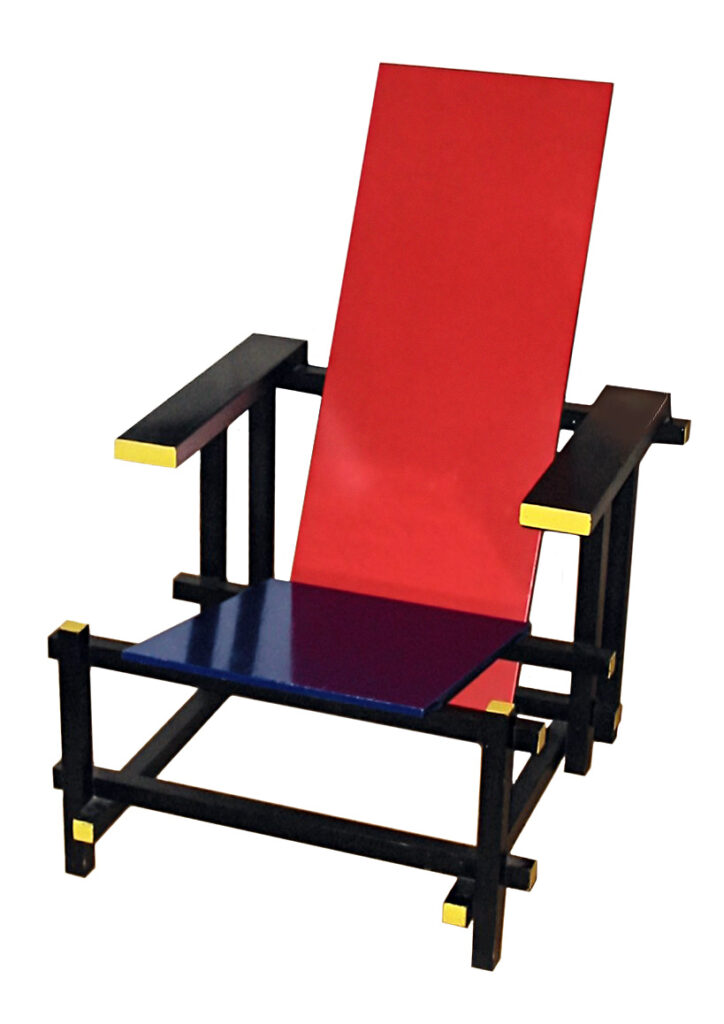
*
To be clear. They do not really legally remove this from the commons, they do this through the means and threat of “legal risk” and the threat of “asshole territory” (see above “When the Creative Commons licenses don’t work for hardware anyway? What is the problem then?”)
So with this and the other answers you should now have an idea why the practice of using Creative Commons licenses for hardware projects does actually more harm to the world of “Open Source” and a sustainable culture of Openness than anything else in the world – than even patents do! Way more than patents do. And still some of the very same people write that their project is “Open Source” right next to this license…
(-‸ლ)
………………………………..__…………………………………………
………………………..,-~*`¯lllllll`*~,……………………………………
…………………..,-~*`lllllllllllllllllllllllllll¯`*-,………………………………
………………,-~*llllllllllllllllllllllllllllllllllllllllllll*-,…………………………….
……………,-*llllllllllllllllllllllllllllllllllllllllllllllllllllll.\…………………….. …….
………….;*`lllllllllllllllllllllllllll,-~*~-,llllllllllllllllllll\…………………………..
…………..\lllllllllllllllllllllllllll/………\;;;;llllllllllll,-`~-,……………………. ..
……………\lllllllllllllllllllll,-*………..`~-~-,…(.(¯`*,`,……………………..
…………….\llllllllllll,-~*…………………)_-\..*`*;..)……………………..
……………..\,-*`¯,*`)…………,-~*`~……………./…………………
………………|/…/…/~,……-~*,-~*`;……………./.\………………
……………../…/…/…/..,-,..*~,.`*~*…………….*…\……………..
…………….|…/…/…/.*`…\………………………)….)¯`~,………………
…………….|./…/…./…….)……,.)`*~-,…………/….|..)…`~-,………….
……………/./…/…,*`-,…..`-,…*`….,—……\…./…../..|………¯“`*~-,,,,
……………(……….)`*~-,….`*`.,-~*.,-*……|…/…./…/…………\……..
…………….*-,…….`*-,…`~,..“.,,,-*……….|.,*…,*…|…………..\……..
……………….*,………`-,…)-,…………..,-*`…,-*….(`-,…………\…….
………………….f`-,………`-,/…*-,___,,-~*….,-*……|…`-,……….\…….
9
People tend to think that retaining a commercial monopoly on a solution is the only way to make a living.
Fine. If you think that is the only way to go then do it. But don’t use “Open Source” or even “Open” to advertise your work then. Because that brand and search term is where people find each other, collaborate and run businesses that actually allow others to make commercial use of their solutions.
But still, think this through. Is it really true that a commercial monopoly is the only way to make a living? Do you make money because of your license? And would this vanish with a different license? Do you remember who taught you that a commercial monopoly is a must for a working business? Why did you believe it? Have you ever really questioned it?
Open Source and working businesses can go very well together. There are countless examples of successful companies and a bunch of resources that open your eyes how this works if you can’t figure it out yourself.
Ressources
But yes. This often requires a little bit of adjustment to the way your business works and how your products are designed. But this is exactly the change and experiments we need in the world of business if we want to find ways to slow down climate change, resource exhaustion and biodiversity collapse. We need new and different networks of professional collaboration to deal with these issues.
And every time someone uses a “Non Commercial” license next to the word “Open Source” it becomes a bit harder for the people who actually run and grow these new businesses.
Creative Commons “Non Commercial” licenses used for hardware block sustainable forms of business in the most powerful imaginable way … more than you could do with any regular business without “Open Source” or a Creative Commons license or with using IP protection as it is meant to be used.
So please. Stop.
10
Well. You have plenty of options.
First of all replace the license with an actual Open Source license like CC-BY (preferred!) or CC-BY-SA license.
Or keep your NC-license and drop the word “Open Source”. (And if you do us a favour also the word “Open” at all.)
Make at least clear that your Creative Commons “Non Commercial” license is not talking about the hardware itself just its documentation – the design FILES. Not the design itself. Which would be correct anyway. Tell people they are free to recreate your solution for any purpose they see fit. Which is probably the correct representation of the legal situation anyway.
If you are a hardware or product designer pls see how we at Mifactori are tackling the problem of designing our property rights in order to design for sustainability and draw some inspiration from that: → Open Design, the Legal Side.
If you want to design for sustainability – for new networks – you can’t ignore legal questions in your design.
UPDATE: Here is a talk (with video recording) where we actually explain how things are done right.
11
We made a campaign and a couple of funny GIFS for it to collectively clean up the situation. Join it! Or just enjoy the memes.
11+
+
written by Lars, probably like this ← 😉
Want to comment? Pls. send your comment via Email to hello(at)mifactori(dot)de. We’ll publish it when it adds something.
–
